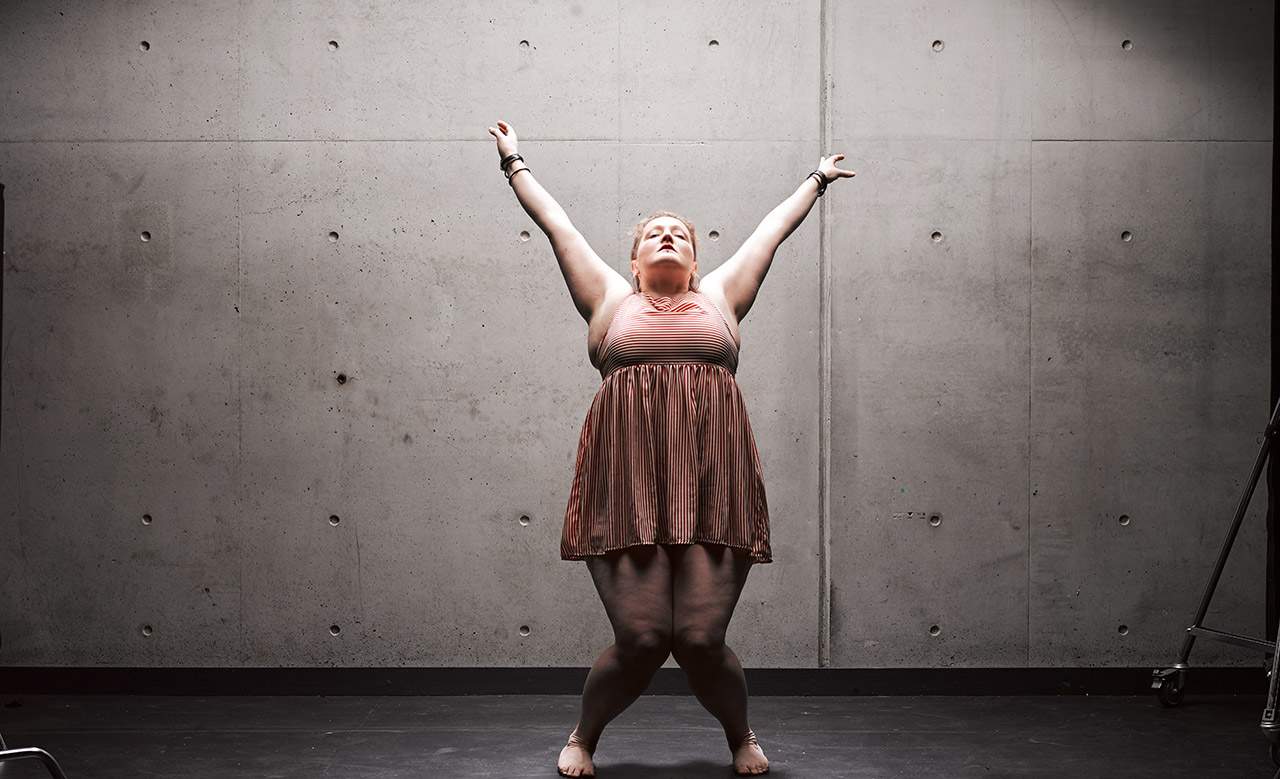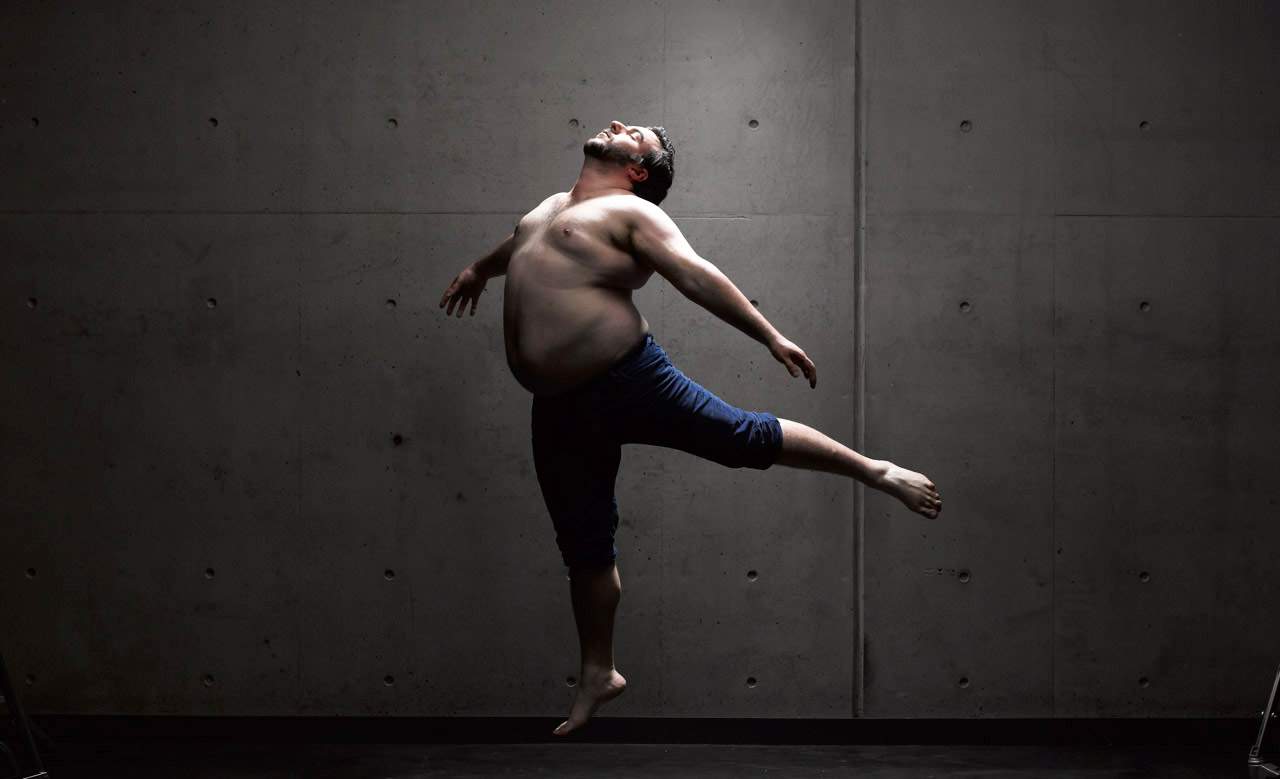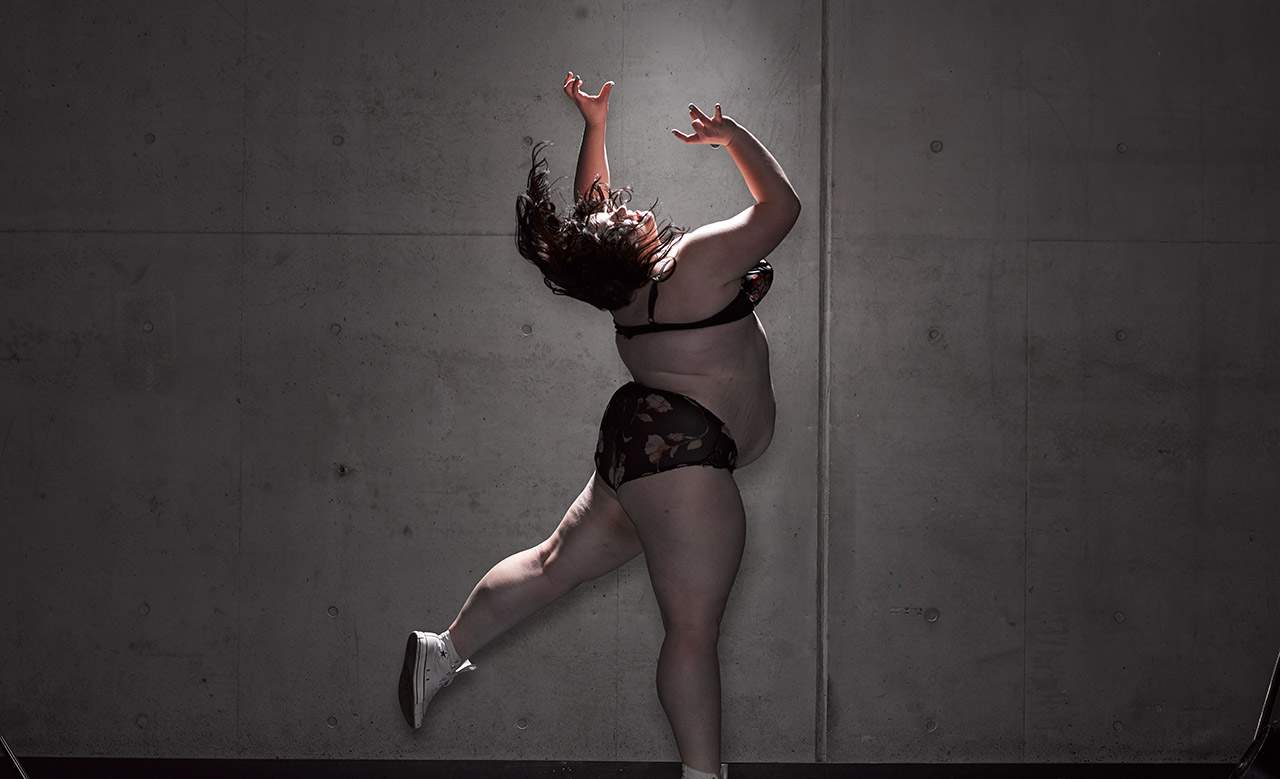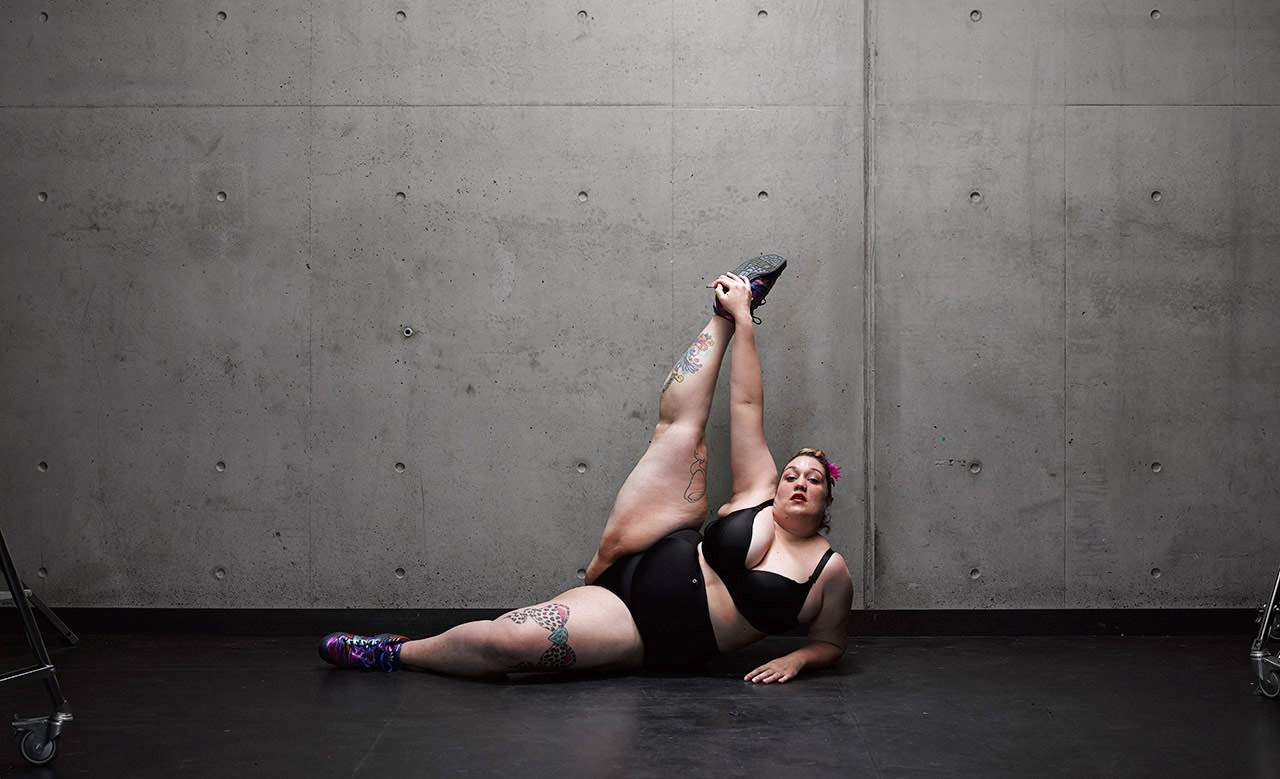Why Fat Dancers Might Be the Most Important Thing You See at The Sydney Festival
With Nothing to Lose, dance company Force Majeure is poking at our prejudices.
When Kevin Bacon stood up in Footloose and said, “This is our time to dance. It is our way of celebrating life,” what he didn’t say was “but only for skinny people”. And yet, that seems to be what we mean these days. 'Fat' dancers and performers aren’t often seen, and so many people seem to have so many opinions on fatness and how fat people move through our society. We look at fat people and assume things — that the person is lazy, slovenly, unhappy and definitely, definitely ungraceful and unconnected to their bodily wellbeing.
Now fat activist and artist Kelli Jean Drinkwater and resigning Force Majeure artistic director Kate Champion are working together to broaden our outlook on the body and the act of dancing. Playing as part of the Sydney Festival, Nothing to Lose is highly topical, audacious and — coming from dance-theatre masters Force Majeure (Never Did Me Any Harm, Food) — sure to be a powerful watch. Challenging as it is to our prejudices, it might even be the most important work you see at the festival.
We spoke to Drinkwater and Champion about the thinking behind the provocative project.
What troubles and interests you about the way our society views fatness?
Kelli-Jean Drinkwater: As an artist and a fat woman, what I find fascinating and intensely frustrating is the one-dimensional view of fat people and the lives we lead. Fat is usually seen as something to be deeply ashamed of and avoided at all costs. The mainstream culture here in Australia still has an incredibly narrow view of fat people, our capabilities, our health, our relationships. There is so much more to our lives as individuals that is rarely given a platform to be explored.
I think we need to engage in critical thinking about our relationships to our own bodies and why most people, regardless of their size, are unhappy with how they are physically. Let’s also investigate how this impacts our view of other people and their bodies. Hopefully then we can start to be more accepting and, dare I say, even celebratory of the many ways there are to have a body.
What are we missing if we only see athletically built people dance?
Kate Champion: Well it seems to me we’re missing out on about 95 percent of the population being represented on stage as dancers! Obviously there’s a certain athleticism that lends itself to achieving technically difficult physical feats and certain styles of choreography. I can certainly appreciate that for what it is, but there is so much more to dance and what dance can be than that. It can be quirky, soulful, intriguing, captivating and intoxicating when performed by a person with a less ‘typical’ dancer’s body who really owns their movement.
What is it like to be a fat person in an un-fat-friendly world?
KJD: I can only speak from my experience, but being a person of size in our relentlessly body-shaming culture is tough. We are constantly judged, mocked, berated, pathologised, patronised and silenced in really obvious but also often insidious and subtle ways. The flip side of that is you have to learn to have a thick skin and a strong sense of your self-worth to hold your head up. I just try and use any negativity that comes my way to fuel the fat activist fire.
It feels like fat activists are making some positive strides, particularly on the internet through memes such as #fatkini. Do you agree?
KJD: I do believe that there is a noticeable groundswell in body positivity and fat activism here in Australia, much more than there was ten or even five years ago, and it's long overdue! And for sure social media is playing a huge part in that by creating access to communities that encourage each other to critique dominant cultural ideas around fatness. It’s like this collective tipping point and I think people regardless of their size are sick of feeling pressured by a prescribed standard of 'physical perfection', whatever that means. I believe audiences are eager to see a broader scope of bodies on stage. That’s what is so refreshing about Nothing to Lose. It’s a really timely work.
What aspects of fatness do you explore through Nothing to Lose?
KJD: [We're aiming] to explore the often overlooked aspects of the fat experience as well as give a fresh perspective on the more obvious ones. We explore the strength, capability and complexity, both physically and intellectually, that our cast live every day. We are also not shying away from the controversial issues but are instead seeing this as an opportunity to present a different side of the story. Our fearless cast are as interested in going to the more unexplored places in this work, as Kate and I are.
Nothing to Lose has been in development from an open call-out. What surprised you or went differently than you thought it would over the course of this development?
KC: Through both the auditions and ... the relatively brief periods of development so far — two weeks in 2013 and the same this year — we have focused on developing our level of trust with each other in order to see just how far we can go with material both physically and psychologically. This is sensitive subject matter but we need to make sure we’re not tiptoeing around any important issues. If we can’t approach the work with a no-holds-barred attitude amongst ourselves, then we’ll miss out on the full extent of the cast’s movement capacity and the full impact and levels of complexity that the subject matter contains.
It’s been refreshingly honest and extremely illuminating so far! I'm amazed by the range these performers possess. They have filled us with inspiration to create a truly original, thought-provoking performance.
Why should people watch this show?
KC: People should watch this show to broaden their appreciation of who should dance on stage and what dance can be. To my mind all good shows have elements that are unexpected, confronting, joyful, insightful, confusing and liberating. This show aims to realign conditioned response in order to see and value the dancing body afresh.










